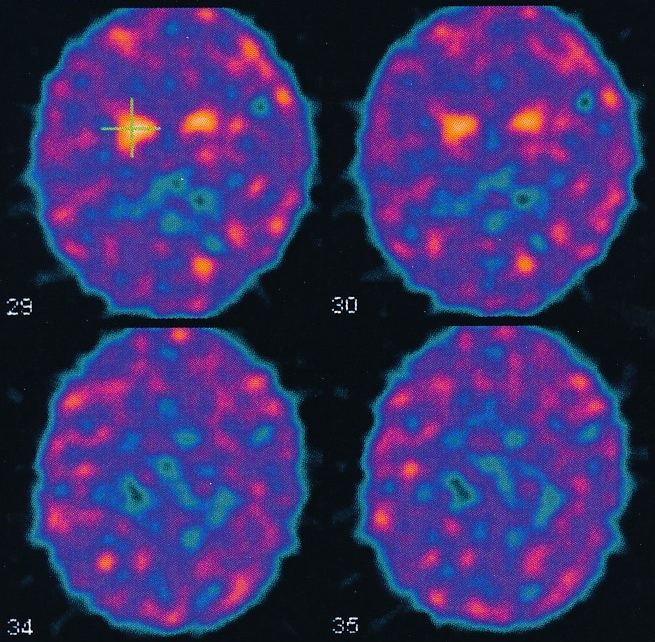Session Information
Date: Wednesday, June 7, 2017
Session Title: Ataxia
Session Time: 1:15pm-2:45pm
Location: Exhibit Hall C
Objective: In this report, we describe a Brazilian patient with SCA10, with parkinsonism, with a 99Tc – TRODAT-1 SPECT demonstrating dopaminergic deficiency.
Background: Spinocerebellar ataxia type 10 (SCA10; OMIM #603516) is a rare autosomal dominant inherited cerebellar ataxia associated with several extracerebellar signs.1 SCA10 is most found in Latin America countries, particularly Mexico and Brazil.1,2 . The phenotype described in Mexico, is characterized by the association of cerebellar ataxia with epilepsy, while in the south of Brazil the SCA10 phenotype most commonly is a pure cerebellar ataxia.1,2
Methods: In this report, we describe a Brazilian 46-year-old –man with SCA10 and parkinsonism, with a 99Tc – TRODAT-1 SPECT demonstrating dopaminergic deficiency.
Results: This 46-year-old –man first noted gait imbalance and dysarthria at 44 years of age, with progressive worsening in the last year. The patient tested positive for an SCA10 expansion (22/1620). Neurological examination demonstrated mild gait ataxia, dysarthria, and gaze-evoked horizontal nystagmus, without ophthalmoplegia, associated with bilateral bradykinesia, predominantly in the right side, and muscle rigidity, with cogwheel sign in the right arm. The brain 99Tc – TRODAT-1 SPECT demonstrated symmetric reduction on dopamine transport binding on both putamen and moderate reduction on the left caudate nuclei [Figure1].
Conclusions: We report a patient with genetically proved SCA10 with marked reduction on dopamine transport binding in both putamen and moderate reduction on the left caudate nuclei, in the brain 99Tc – TRODAT-1 SPECT. SCA10 patients can present with cerebellar ataxia associated with epilepsy, or pure cerebellar ataxia, but sometimes, peripheral neuropathy, cognitive impairment, mood and behavioral disturbances, mild pyramidal signs, and movement disorders (dystonia and parkinsonism) can be scarcely associated.1,2 Parkinsonism has been described in patients with spinocerebellar ataxia types 2, 3 and 17, and is more rarely described in patients with SCA types 6 and 8. In SCA10 patients parkinsonism represents a very rare clinical manifestation. To date our case report represents the first world description of a patient with SCA10 and parkinsonism evaluated with 99Tc – TRODAT-1 SPECT.
References: 1. Teive HA, Ashizawa T. Primary and secondary ataxias. Curr Opin Neurol 2015; 28: 413-422.
2. Teive HAG, Munhoz RP, Arruda WO, Raskin S, Werneck LC, Ashizawa T. Spinocerebellar ataxia type 10 – A review. Parkinsonism Relat Disord 2011; 17: 655-661.
To cite this abstract in AMA style:
G. Fabiani, R. Filho, T. Ashizawa, H. Teive. 99mTc -TRODAT- 1 SPECT SHOWING DOPAMINERGIC DEFICIENCY IN A PATIENT WITH SPINOCEREBELLAR ATAXIA TYPE 10 AND PARKINSONISM. [abstract]. Mov Disord. 2017; 32 (suppl 2). https://www.mdsabstracts.org/abstract/99mtc-trodat-1-spect-showing-dopaminergic-deficiency-in-a-patient-with-spinocerebellar-ataxia-type-10-and-parkinsonism/. Accessed April 18, 2025.« Back to 2017 International Congress
MDS Abstracts - https://www.mdsabstracts.org/abstract/99mtc-trodat-1-spect-showing-dopaminergic-deficiency-in-a-patient-with-spinocerebellar-ataxia-type-10-and-parkinsonism/

